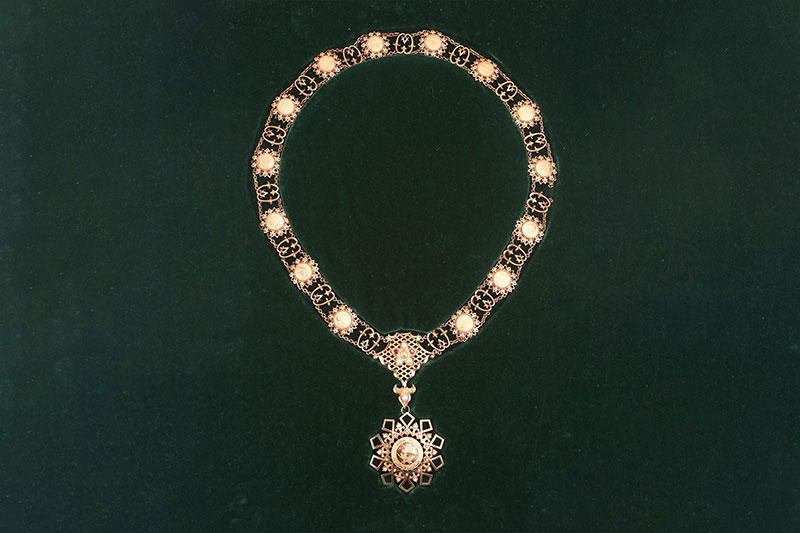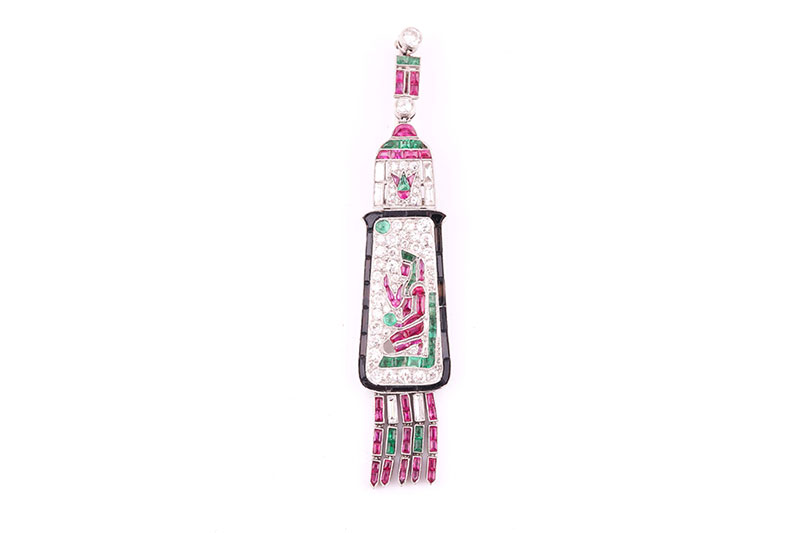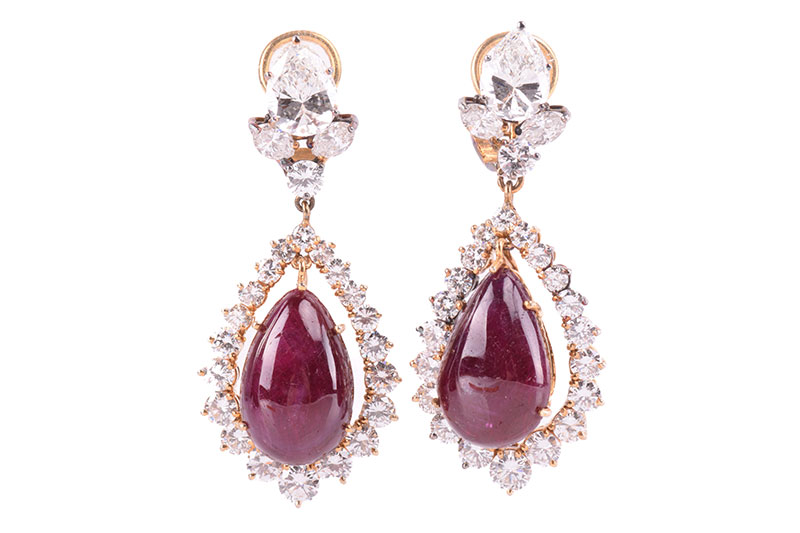How Can You Tell if a Ruby is Expensive?
Like all gemstones, the size of a ruby, measured in carats, affects its value
08/05/2025
Rubies, with their rich red colour and fiery glow are cherished as one of the most prized gemstones. Natural rubies are formed over millions of years by geological processes and have long been symbolic of love, passion,and protection.
The most critical factor in determining the value of a ruby is its colour. The finest rubies exhibit a vibrant, pure red to slightly purplish red hue. This colour is often referred to as "pigeon's blood" or ‘stoplight red’ and is highly sought after if the colour is vivid and evenly distributed throughout the gemstone. Any brown or orange tints can significantly decrease the ruby's value.
The Qatar state collar of Independence
Inclusions, or internal flaws, are common in rubies and can affect their value. A ruby with fewer and less visible inclusions is generally more valuable. Rubies without inclusions visible to the naked eye are called ‘eye clean’ and are particularly prized.
The cut of a ruby impacts its brilliance and sparkle while enhancing the natural colour and clarity of the ruby. A cabochon cut and polished ruby may display as an ‘asterism’ which is a star shaped reflection of light. Star rubies are very desirable but poorly cut rubies may appear dull and are subsequently less valuable than those of a quality cut.
Like all gemstones, the size of a ruby, measured in carats, affects its value. Larger rubies are rarer and more expensive per carat. However, the other factors—colour, clarity, and cut—are also critical. A smaller ruby of exceptional quality will be more expensive than a larger ruby of inferior quality.
French Art Deco platinum and multi gem Egyptian revival pendant
The origin of a ruby can also influence its price. Rubies from certain locations, such as Myanmar (formerly Burma), are highly sought after for their deep, rich colour and exceptional quality. Other notable sources include Thailand, Sri Lanka, and Mozambique, each producing rubies with distinctive characteristics which augment their value.
Many rubies undergo treatments such as heat treatment to improve colour and clarity, and fracture filling to reduce the visibility of inclusions - this can affect the value of a ruby – although, heat treatment is regarded as an industry standard, and it is incredibly rare to find a ruby that has not been heat treated.
Finally, synthetic, lab-grown rubies are identical in chemical and physical properties to natural rubies, but they are considerably less expensive as they can be produced in large quantities without any costly mining extraction process.
A pair of ruby and diamond pendant earrings
As with all gemstones, verification by a reputable expert can provide assurance about the quality and authenticity of your ruby. Here at Dawsons, our friendly team have extensive expertise in gemstone appraisal and use independent laboratory testing to certify gemstones, identifying treatments that may affect value. We will accurately assess and value your ruby and ensure an accurate market valuation.
Related Articles
How Do I Know If My Jewellery Is Valuable?
How Do I Sell Unwanted Jewellery?
Is It A Good Time To Sell Diamonds?
Are you considering selling ruby jewellery?
With access to a global audience of over 10 million active bidders, Dawsons can secure the highest price.
Get in touch with an expert Jewellery Valuer for confidential sales advice, we would be delighted to help:


